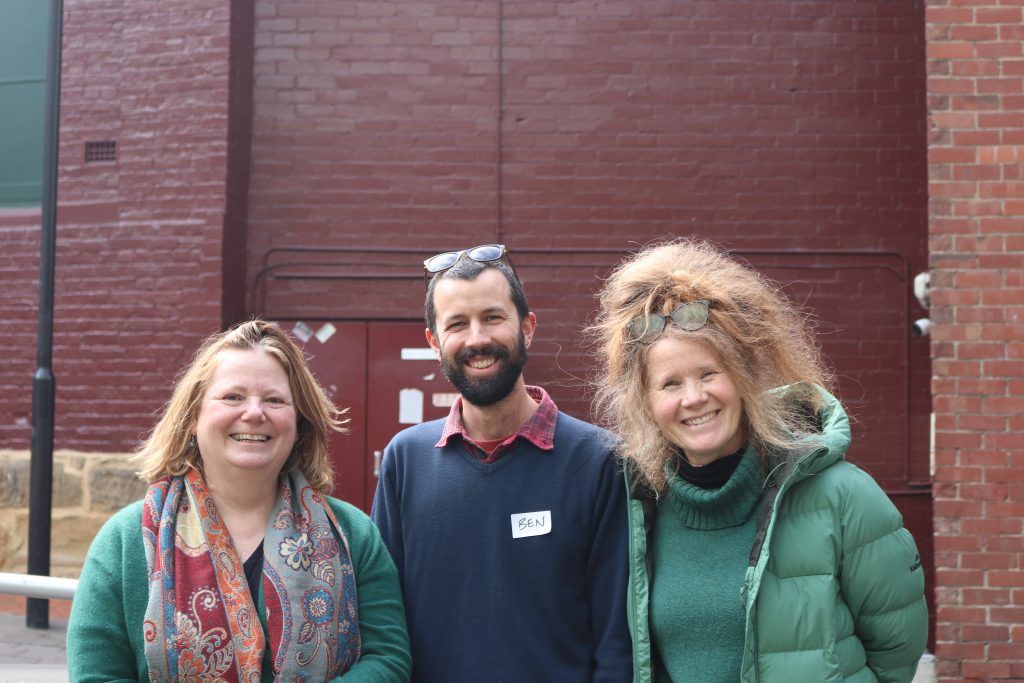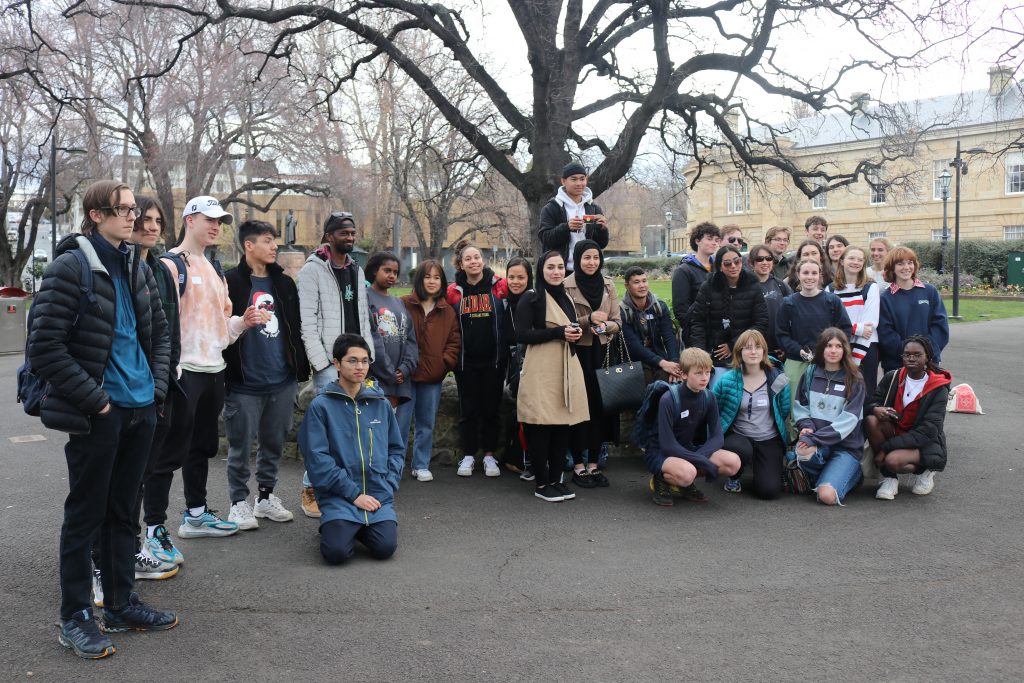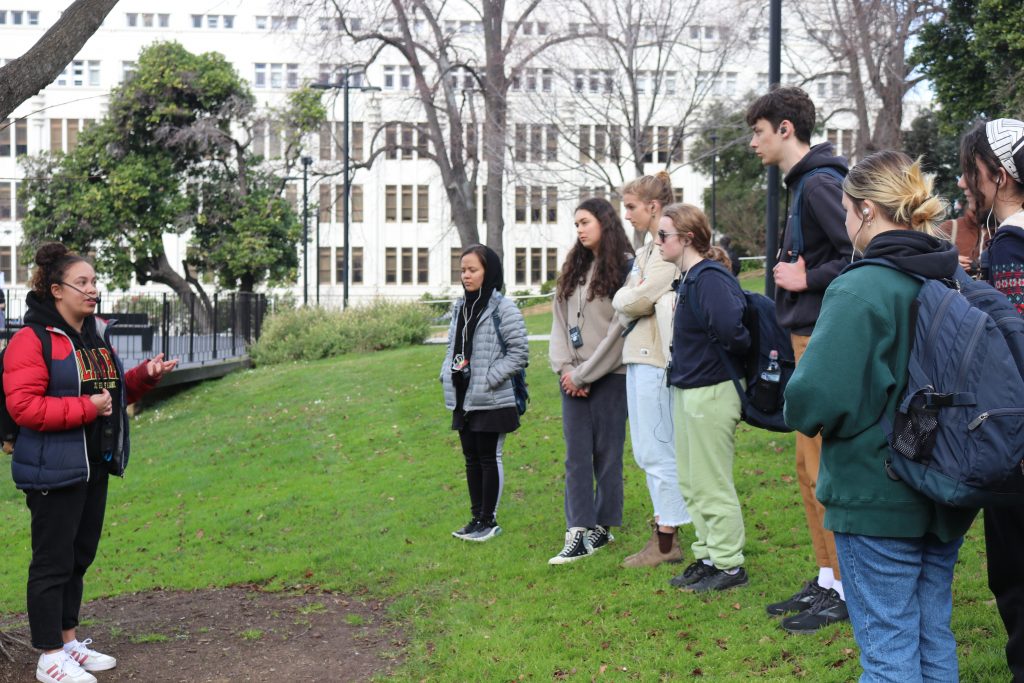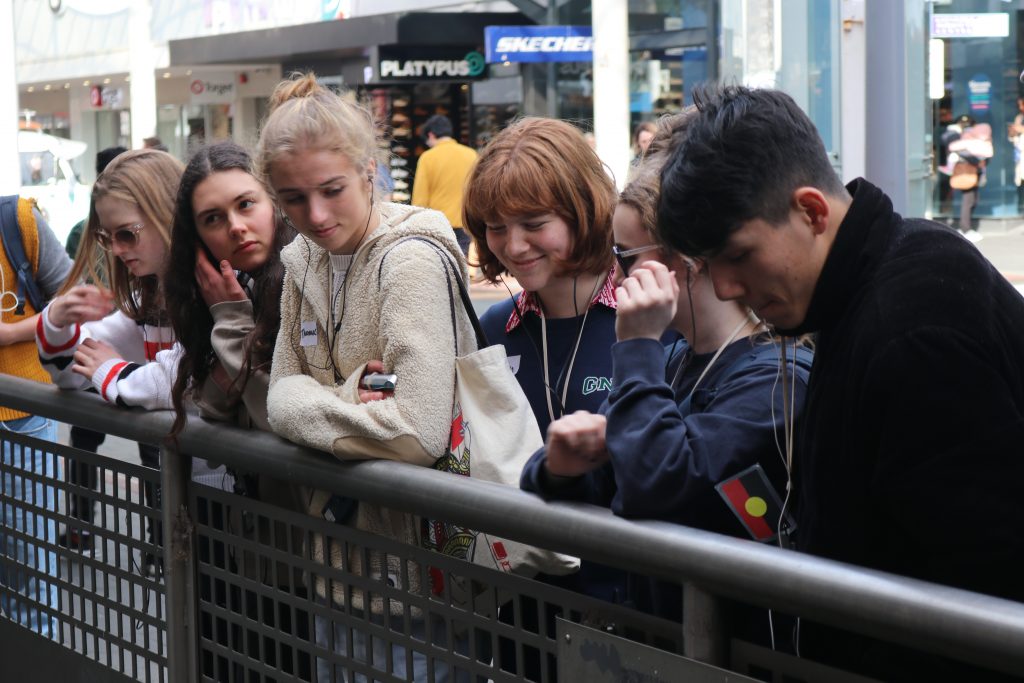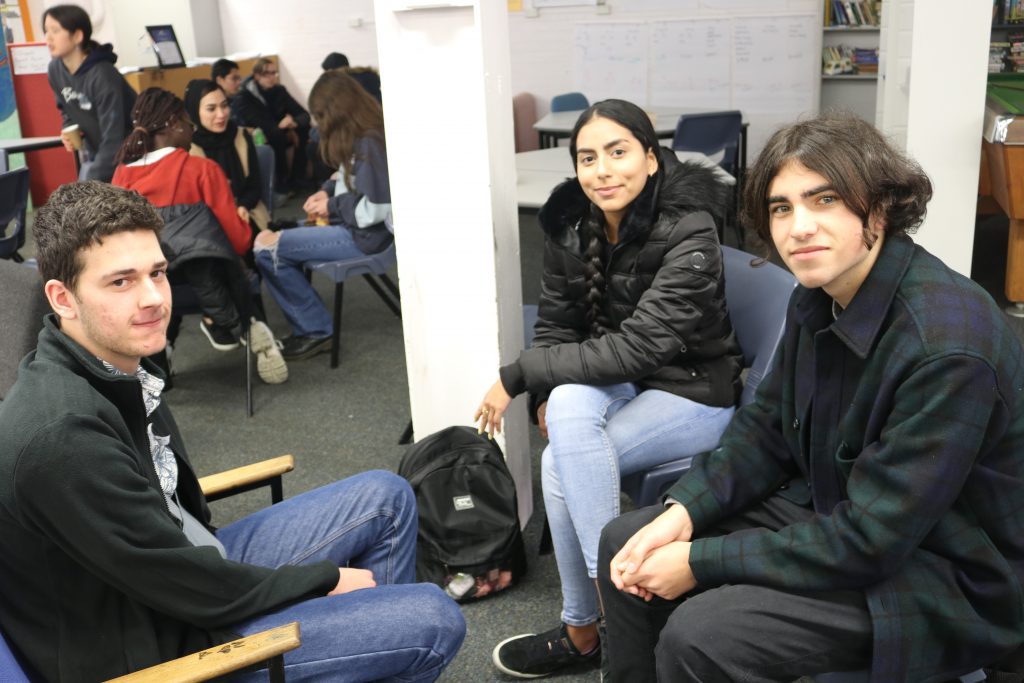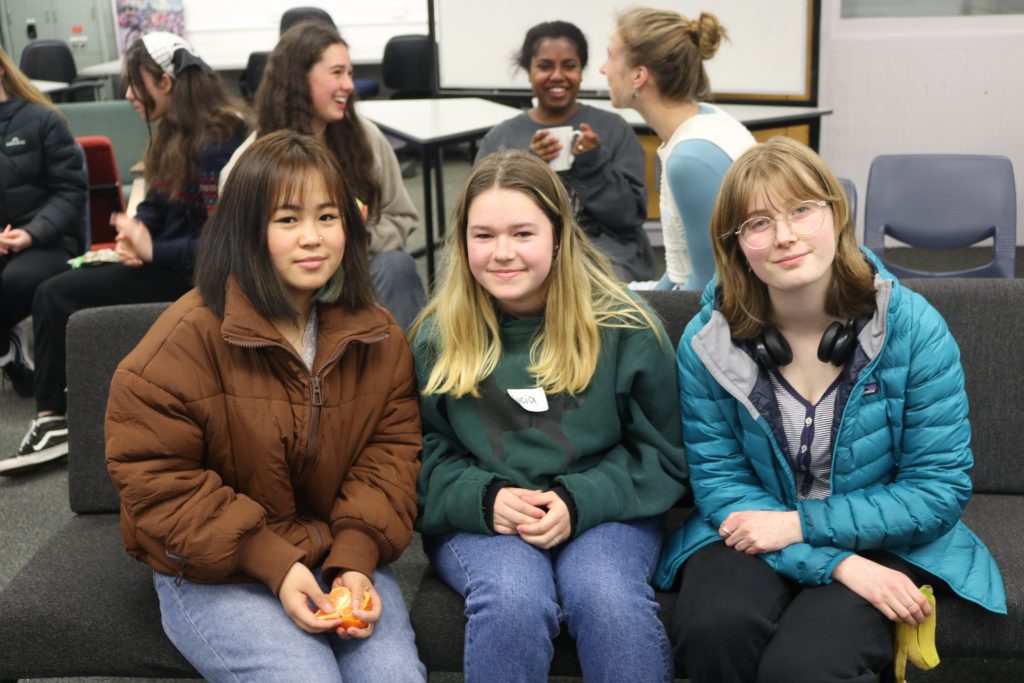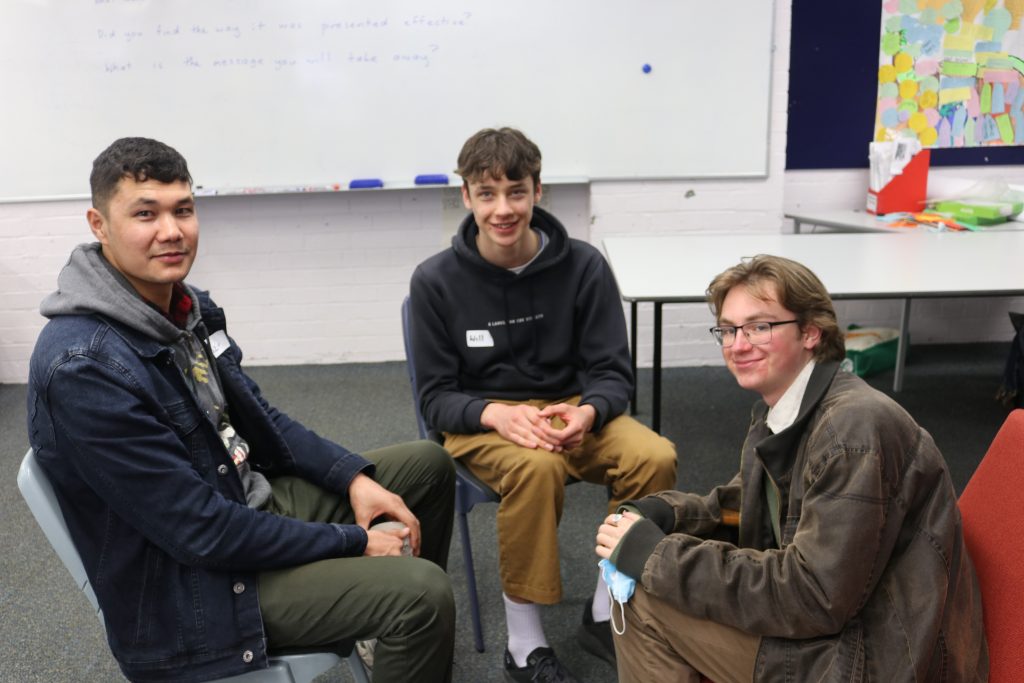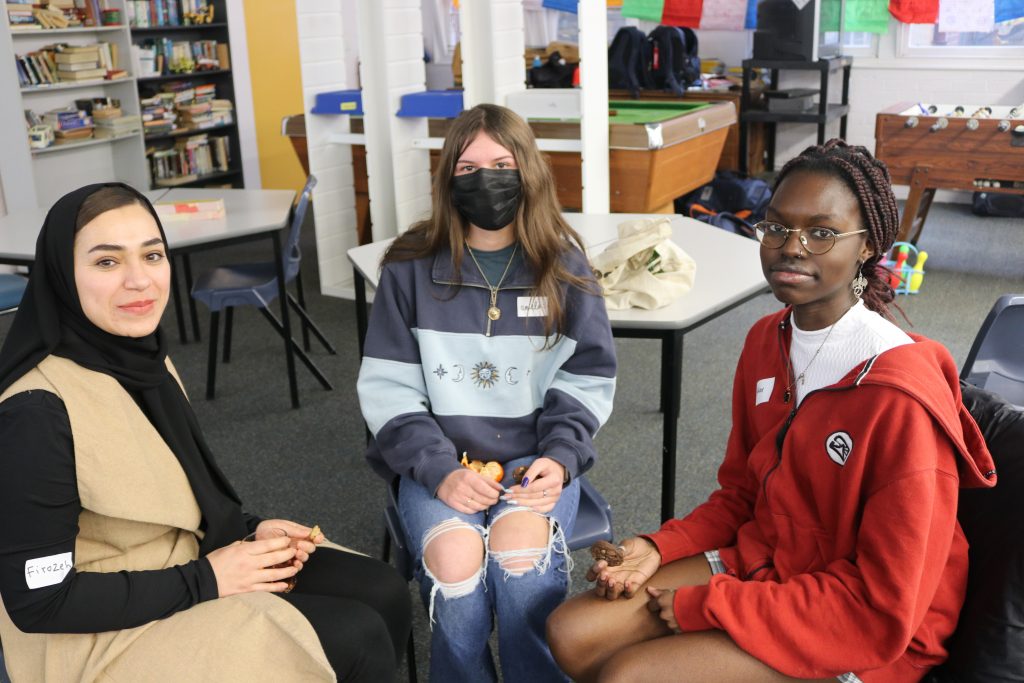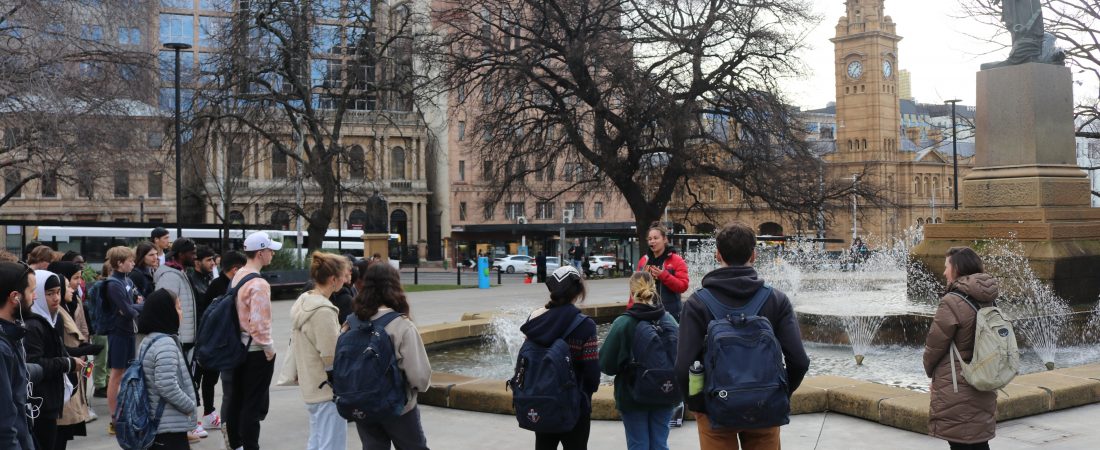Year 11 IB Core Days Reflection
Posted on October 3, 2022
By Ruby Scully (Year 11)
The IB core is the essence that guides all our learning. Composed of the Extended Essay (EE), Theory of Knowledge (TOK) and Creativity, Action and Service (CAS), the IB Core is compulsory for all Diploma students, along with the ‘Core Days’ that reflect these branches. The most recent of these for Y11 IB students took place in August, while TCE and Year 12 IB students were doing exams.
Warning to Torres Strait Islanders and Aboriginal people: while not containing names or images of the deceased, this reflection includes mentions of violence towards Aboriginal people. Please take care in reading.
The first Core Day was for CAS (Creativity Activity Service). After briefly updating our CAS portfolios, we caught a bus to participate in the ‘Gumnuts to Buttons’ workshop with the Young Migrant Education Programme (YMEP) students.
This workshop was run by Jen and Gia, a proud Palawa (Palawa Kani for Tasmanian Aboriginal) and Torres-Strait Islander, respectively. Its purpose is to inform learners of Lutruwita’s (Tasmania’s) history from an Aboriginal perspective, as well as to evoke empathy and respect for Tasmanian Aboriginal culture.
Many of the YMEP students have lived in Australia for less than 3 years, contrasted by the Year 11 IB, most of whom have lived in Tasmania our whole lives. Despite this, we all found that we had much to learn from Jen and Gia. The workshop was delivered incredibly effectively; it consisted of a large map of Lutruwita covered in photos we had brought of beloved items, with gumnuts scattered on top representing the Palawa people. As the recount was told, there was discussion of the assault and killing of Aboriginal peoples. For each incident, Gia threw a gumnut aggressively into a tin, mimicking the sound of a gunshot for auditory immersion. Along with this, each gumnut on the map was replaced by a button, representing British colonists, demonstrating their extreme disregard for the land and Palawa people. Our photos were then torn, serving as a metaphor for the fragmented Tasmanian Aboriginal culture in the wake of colonisation.
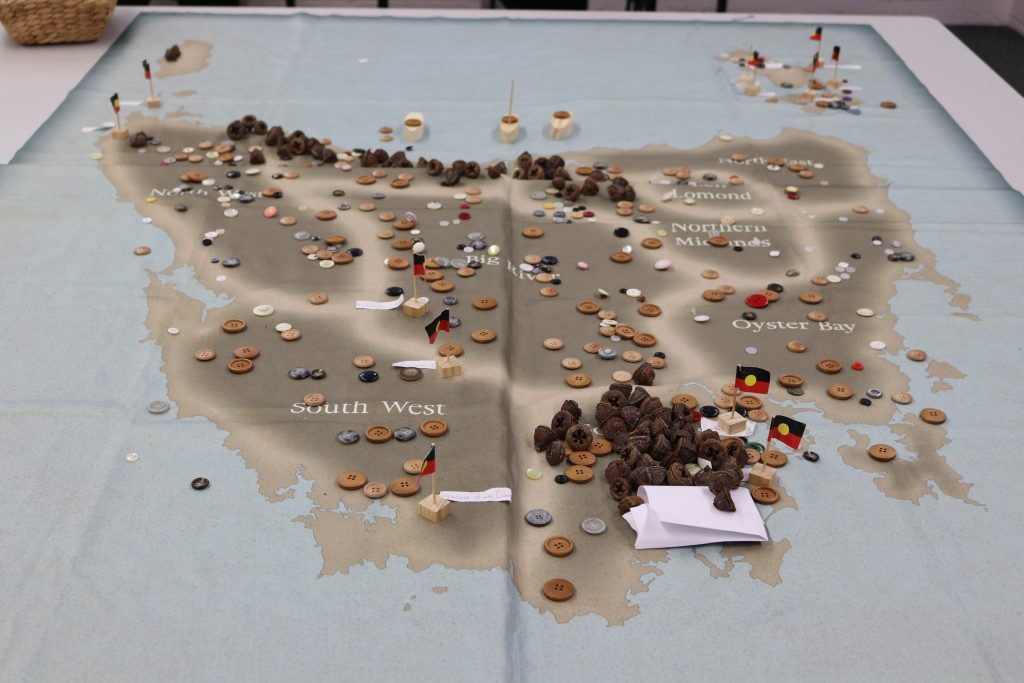
Takara Nipaluna is an Aboriginal history walk around Hobart, which we undertook after the workshop. Led by Nunami Sulthorpe-Green, a Tasmanian Aboriginal person, participants walk the route “taken in 1832 by a group of forty members of the Aboriginal resistance, as they progressed to the old Government House to negotiate an end to the Black War” (Nunami 2021). On the Takara Nipaluna, the strength of Tasmanian Aboriginal Peoples was abundantly clear. Nunami described the resistance fighters as warriors with great pride in country, physical strength and admirable skills of diplomacy and refined battle strategy.
This CAS day dovetailed perfectly with the following TOK day: both focused on the history of Lutruwita from Aboriginal perspectives. Based in the Tasmanian Museum and Art Gallery (TMAG), we toured a selection of exhibitions, interspersed with group discussion following the guiding TOK themes. The key exhibitions we viewed were ‘Ningina Tunapri’, centred on Tasmanian Aboriginal culture, and ‘Dispossessions and Possessions’, a gallery of British colonial artwork. In these spaces, we assessed formal artistic qualities before forming a more critical analysis of the influence of the colonial values, history, and bias present in the exhibitions. This day aimed to promote re-evaluation of our conceptions of historical knowledge, and to provide us with a more critical and well-rounded view of the past.
For the EE day, we were lucky to be granted full access to the Clemes library and its resources. As we are still in the (relatively) early stages of the EE, the day was devoted to elucidating a topic and commencing research, with the guidance of Lynne and Stacey, our librarians. As fuel for the brain (and the soul), we indulged in pastries for recess and bento boxes for lunch (!).
These Core Days sought to increase our awareness of Palawa culture and history, develop our critical engagement with the legacy of colonisation, and spur us into action regarding our EEs. And they delivered on this. I would like to say a huge thank you to Sarah, Brenda, Theresa and Ben, without whom we could not have had these engaging and invaluable experiences.
